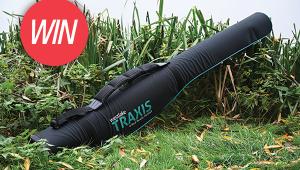Natural Selection
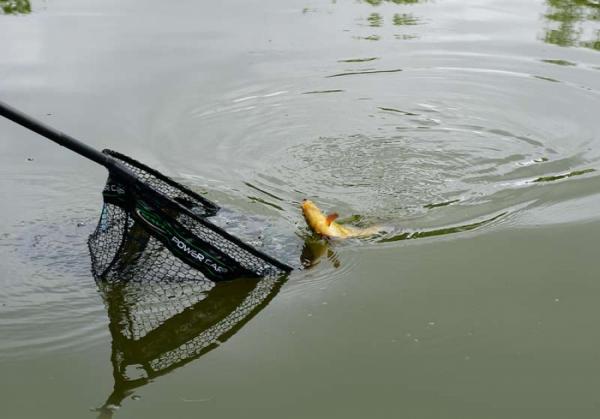
England international Callum Dicks explains how less-selective baits start to rule after fish get sick of the same old pellets!
Now that we are well into English summertime and our commercial fisheries have been bombarded with pellets for the past few months, it is inevitable that the fish having to eat them will be wising up to our tactics.
It is about now that a switch back to more natural baits, such as worms, casters and maggots can give you an edge over those around you and it has certainly stood me in good stead these past few weeks!
The Venue
Packington Somers Fishery is a simply stunning venue hidden away within the Stonebridge Golf Centre in Meriden, near Coventry. The venue is home to 13 well-stocked lakes as well as a stretch of the River Blythe, totalling approximately 20 acres of idyllic water.
As well as the abundance of fish-filled lakes the site is also well equipped with an on-site cafeteria, tackle shop and toilet facilities, so, simply put, Packington Somers is set up to cater for your every need!
From the available lakes I have decided to bring you to the wonderful Molands, a 61-peg water offering superb fishing with a huge range of match-winning methods possible. It resembles a large canal in its layout but rather than the 12 to 16 metres width that we are used to seeing at a lot of commercial fisheries, Molands averages around 30 metres wide.
This makes it perfect for all possible methods, whether that be the feeder, pellet waggler, long pole, short pole or whatever other method you can think of or, for that matter, best suits you.
Today I will be focusing on a long-pole approach using a sticky groundbait-based feed packed with worms, casters and dead maggots. I will be targeting the fish on the bottom rather than trying to get them to feed shallow, which at this time of the year goes a little against the grain, but when some of the most common species stocked in these lakes are big skimmers and tench I feel so many people miss out on these valuable fish in match situations.
The Mix
Commercial fisheries are so switched on to the smell and taste of fishmeal that I always tend to opt for a fishmeal-based groundbait when targeting such venues.
I want the consistency of my mix to be sticky and act as a carrier for the particles I have put in it. Ordinarily a slop mix is used to attract fish to feed in the upper layers and is therefore designed to create a cloud as it hits the water.
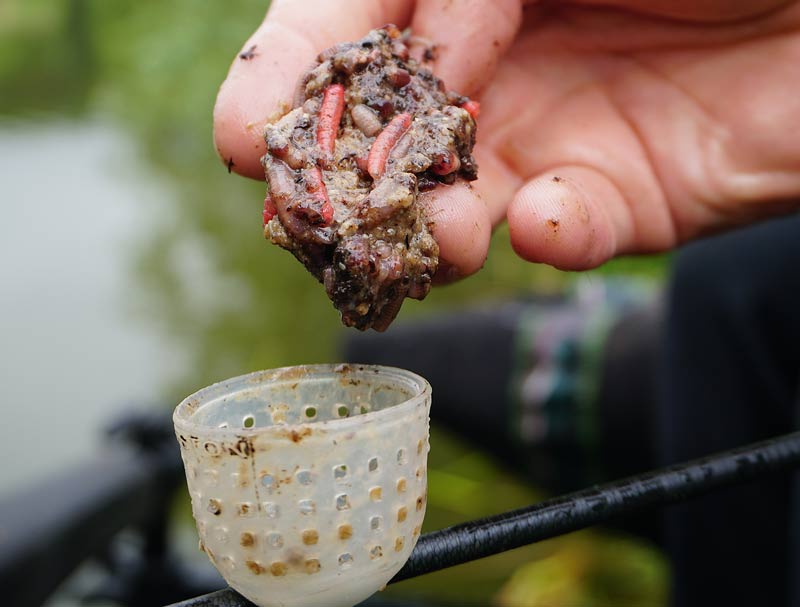
This mix has the opposite effect and is aimed to carry the bait down to the bottom where I will target my attack. If I feel a shallow approach is going to work better I would mix my groundbait differently, with the main aim to have it create a cloud as it hits the water. My sticky mix, on the other hand, will break down on reaching the bottom of the lake.
Once I have mixed my groundbait to the desired consistency I add any feed content that I feel the mix needs. Today a handful of dead maggots and casters, along with 250ml of lightly chopped worms and the same again of micro pellets is my starting point; this may be altered throughout the session depending on my catch rate.
The Plan
Fishing in this manner requires persistence and will be rewarded throughout the day. I will start the session by feeding a small blob of the sloppy mix through a Cad Pot every drop in; this allows me to feel my way into the match or session while building the swim up.
What I tend to find by feeding my swim in this way is that it will progressively get stronger throughout the day. Once I have figured out how much feed the fish want I can have the fish queued up in my swim waiting for the next blob of bait to go in along with my hook bait.
This also gives me the added advantage that when others around the lake tend to have slow periods within a five-hour match, fishing in this way means that I tend to catch consistently throughout. This gives me the added security that even if I was to catch a slightly smaller stamp of fish at the start of the session I am confident that I will catch more fish than others, and the bigger fish will move in later in the day.
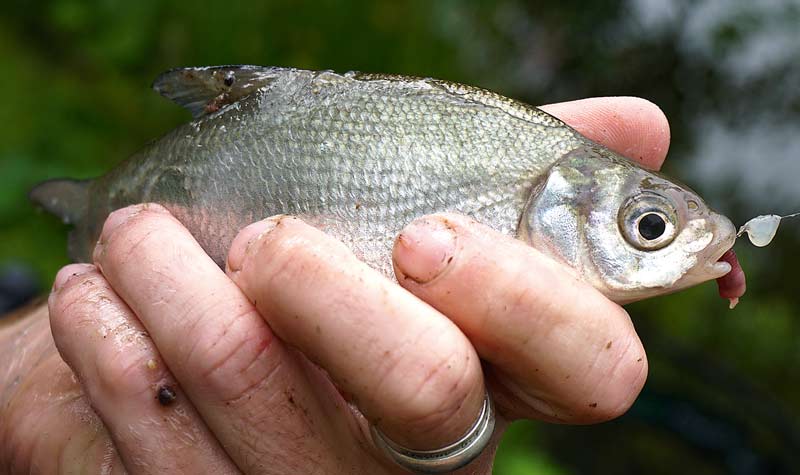
Skimmers like this are a positive sign in the early stages of the session!
The Session
I set off by Cad Potting a ball of slop on my long-pole line and lower my rig into the swim. Within a minute my float dips and a small skimmer is easily swung to hand – a positive start. These smaller fish are good weight builders at this point and their activity in the swim helps to bring other fish into the area.
By alternating between a worm head, caster or dead maggot hook bait I am able to keep bites coming. Initially the stamp of fish is small, with plenty of action from skimmers and small crucian carp. It doesn’t take too long, however, and I soon feel some bigger fish have moved into the area.
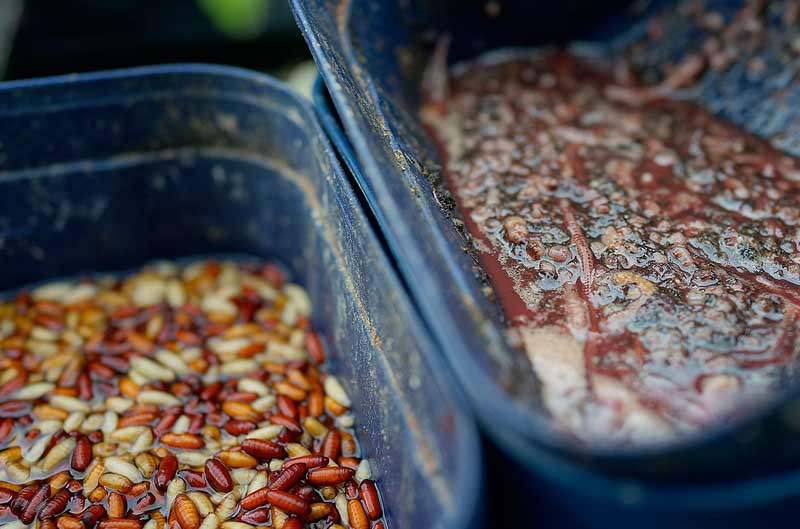
Baits like worms and casters will attract all species.
I am waiting slightly longer for each bite now, with bites coming up to a minute after the rig has settled, but, when my float goes under it is resulting in fish of the size I am after – F1s, carp, crucians and skimmers upwards of a pound are all falling to my worm hook bait and my 6-10 rated Maver Retro Dual Core elastic is getting a good workout!
The small amount of sloppy groundbait I am cupping in every time I ship out seems to be holding the fish in the swim well and I am not suffering many missed bites or foul-hooked fish. This tells me I have got the feeding about right. If I felt I had too many fish in the swim or started suffering missed bites I would choose to either cut back my feed or increase it, depending on which got the best reaction.
Fluorocarbon V Mono
It is worth mentioning my rig setup for this sort of fishing. I have opted for a 0.5g UFO 2 pole float that features a slim body, wire stem and a 2mm thick hollow bristle that is extremely visible. The float is new to the UFO range from Maver and is one I have been really impressed with since I started to use them.
My rigs are tied to a strong, durable 0.18mm diameter main line but most importantly my hooklengths are tied using fluorocarbon rather than standard monofilament, something that is, in my opinion, making a big impact on my catch rates.
Fluorocarbon has its doubters but I have had nothing but positive results and I feel its attribute of invisibility in the water give me an edge over other anglers. Using 0.12mm diameter Smart Fluorocarbon to a size 14 ES43 hook gives me a setup that I feel I can land anything on.
Shotting is simply a bulk and droppers, which allows my bait to get through the initial two-thirds of the water column quickly but fall nice and slowly into the area where I am targeting the fish, aiding my presentation.
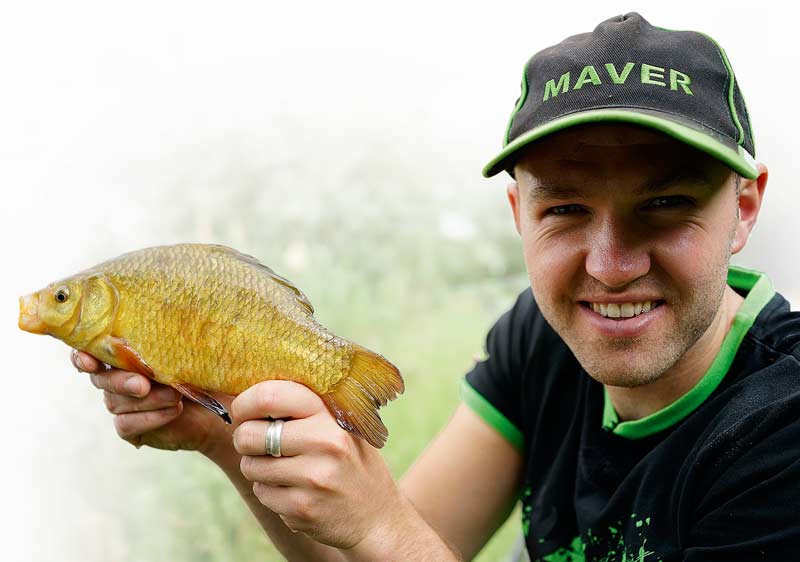
Callum thinks natural baits start to rule over pellets as the year goes on.
Ring The Changes
Bites continue to come thick and fast right up to the point I have to start packing my gear away at the end of the session. I have found that by varying my hook-bait options throughout the session I have been able to fool the fish into getting a quick bite when things seemed to have been slowing down.
I have found that a head of a worm, double caster or three dead red maggots on the hook have produced the best results throughout the day. In the end I have had a mixed net of fish consisting of skimmers, crucian carp, F1s and carp with fish varying from 4oz up to 5lb.
It was noticeable throughout the session how I was able to keep fish coming from the off, whereas others on the lake seemed to struggle in spells, going to show how this non-selective method of fishing can often outgun the use of pellets and more species-specific baits. Go on, get out and give it a try yourself!
 \
\
An impressive mixed bag taken in just a short space of time!
Like what you see?
Or buy a single issue
- Log in or register to post comments



